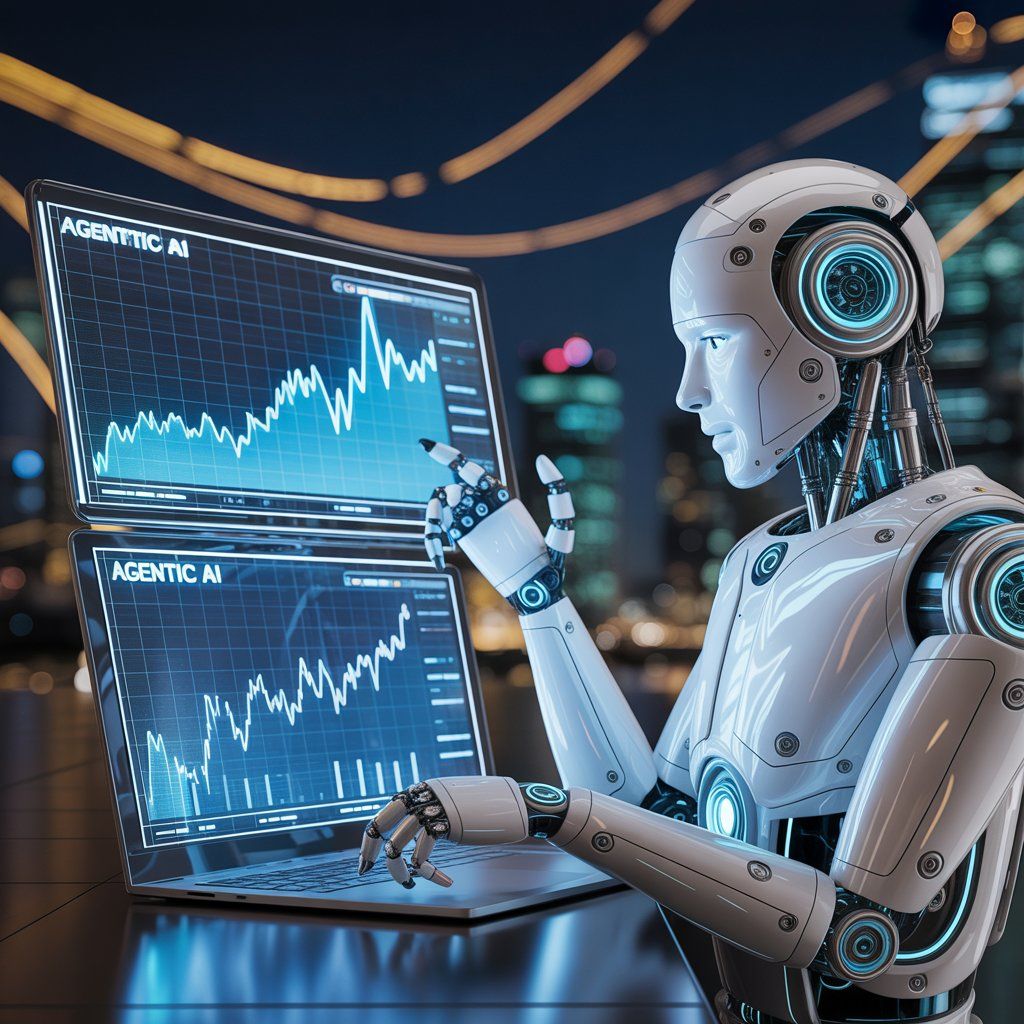
Have you ever searched on Google, asked Alexa, or watched a video of a car driving by itself? If so, you’ve already witnessed artificial intelligence, or AI, in action. One of the most interesting technologies available today is artificial intelligence (AI), which is transforming the way we work, play, and live.
This blog will teach us:
- The importance of AI
- How it runs
- Where we make use of it
- Its positive and negative aspects
- And how AI could develop in the future
1. What Does AI Mean?
Technology known as artificial intelligence makes machines—such as computers, robots, or even your phone—act intelligently, nearly like people.
Humans are capable of thought, learning, problem-solving, and decision-making. AI is the process of teaching machines to perform certain tasks.
For example:
- AI is used, for example, when you ask Siri, “What’s the weather today?” and it responds.
- YouTube uses artificial intelligence when it suggests videos that you might find interesting.
- AI is also used when a camera detects a smile.
So, artificial intelligence (AI) is similar to giving a machine a brain, but this brain is composed of data and computer code.
2. A Short History of AI
AI is not as novel as it first looks to be. For ages, people have dreamed of intelligent machines.
- In the past, people used to tell stories about magical machines and robots.
- In the 1950s, Alan Turing, a scientist, put the question, “Can machines think?” In order to determine whether a machine can behave like a human, he also created a test.
- 1956: At a large gathering of scientists, the term “artificial intelligence” was first used.
- 1997: The world chess champion was defeated by a computer known as Deep Blue.
- These days, artificial intelligence is present in our homes, cars, phones, and even hospitals.
3. How Does AI Work?
Consider AI as a student in a classroom.
- It doesn’t know anything at first.
- It examines data (words, images, examples, and facts).
- It is repeatedly practiced.
- It improves over time at identifying objects, responding to inquiries, and resolving issues.
AI learns in a variety of ways:
1. Machine Learning: Examples are how the machine learns. For example, displaying numerous images of cats to a computer until it can distinguish between a cat and a dog.
2. A specific kind of machine learning that functions somewhat like the human brain is called deep learning.
3. When you type a question into Google, for example, natural language processing helps computers comprehend human language..
4. Types of AI
Scientists have defined three basic categories of AI:
1. Narrow AI –AI designed for a single task is known as narrow AI. Google Translate is one example, but it only translates languages.
2. General AI – AI with human-like multitasking abilities. (Scientists are working on it, but we don’t yet have it.)
3. Super AI – Artificial intelligence that surpasses human intelligence in intelligence. (This is just a concept at this time, and some people are concerned.)
5. Where Do We Use AI?
AI is all around us, even if we don’t notice it. Some examples are:
- Phones – camera filters, voice assistants, and face unlock
- Games – More intelligent characters
- Cars – Autonomous technology
- Hospitals –Assisting physicians in diagnosing illnesses more quickly
- Shopping websites – that display items that you might find appealing
- Schools –Assisting teachers in checking homework more quickly
6. Why is AI Useful?
A lot of things that AI can perform can simplify life:
1. operates more quickly than people
2. never gets exhausted or tired
3. Able to manage huge amounts of data
4. able to operate in dangerous climates (such as deep oceans or space exploration)
For instance, AI programs can read thousands of books in a matter of seconds to find answers, and AI robots can assist in cleaning up unsafe materials.
7. The Challenges of AI
AI is amazing. but it has negative aspects as well:
- Loss of jobs: Machines may replace humans in some professions.
- Bias: AI may make unjust or incorrect decisions if it is trained on wrong or unfair data.
- Privacy: AI gathers a great deal of data, which can sometimes be taken advantage of.
- Over-reliance: We risk losing the ability to think and solve problems on our own if we depend too much on AI.
For this reason, governments and scientists are creating guidelines for the safe application of AI.
8. The Future of AI
AI may in the future:
- Help medical professionals in curing illnesses that are currently incurable
- Keep your car safe and accident-free.
- Take advantage of specific teaching methods with your students.
- Save energy to help fight climate change.
Still, people must carefully direct AI so that it benefits everyone, instead of just a few individuals, in order to make this future safe.
9. Fun Facts About AI
- Netflix makes movie recommendations based on artificial intelligence.
- Some AI systems are able to paint pictures and compose music.
- You are currently conversing with an AI chatbot, which is capable of speaking like a human.
- AI is capable of defeating world champions in video games as well as chess and Go.
10. Conclusion
One of the most powerful tools that humans have ever produced is artificial intelligence. It can learn, solve issues, and even produce new things. While there are many ways it can improve our lives, we must use it carefully.
So keep in mind that AI is at work and is transforming our world every day, the next time you ask your phone a question or observe a robot performing an amazing task.


